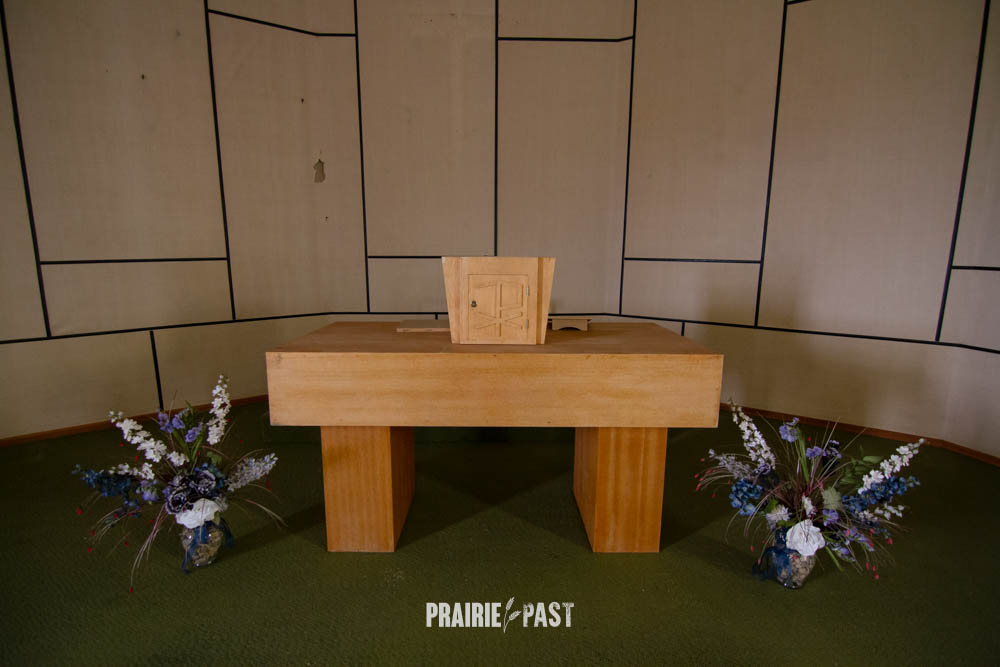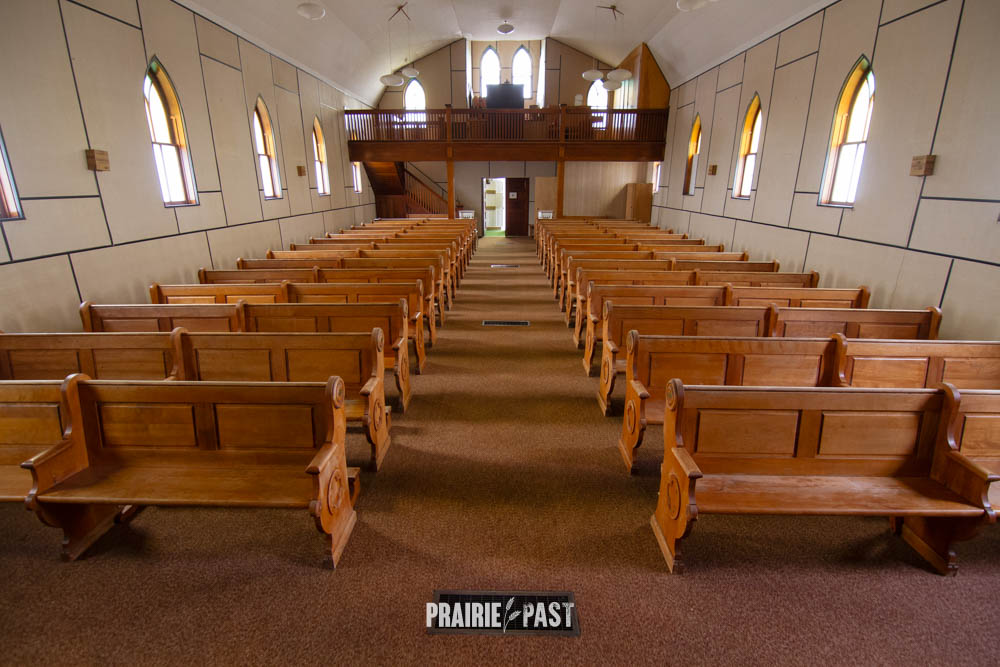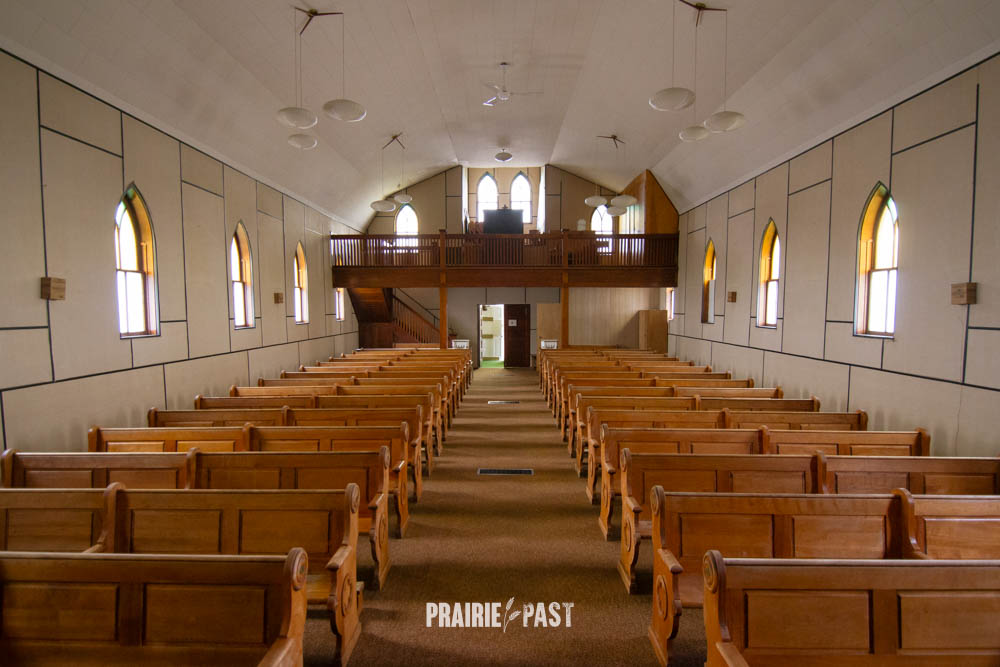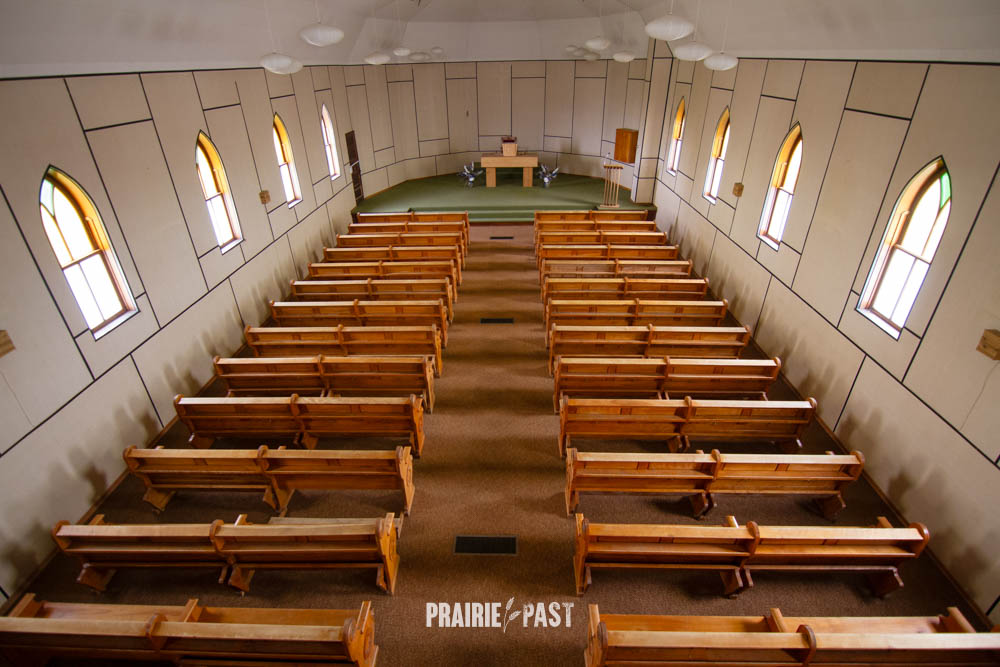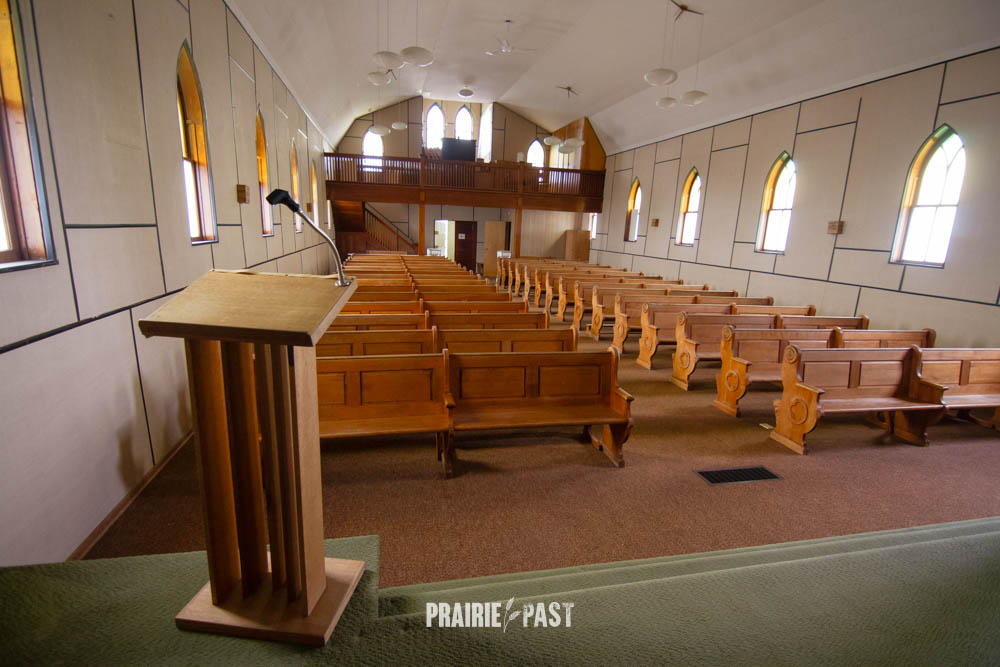St. Ignatius Church in the ghost town of Sinnett, Saskatchewan, is a designated Municipal Heritage Property. The site includes a wood-frame church built in 1928, a cemetery established in 1905, and a large wooden cross that marks the location of the original church. Once a vibrant community hub, Sinnett has since declined, leaving the church as one of the few landmarks of its early settlement.
The heritage significance of St. Ignatius Church is connected to the area’s early Irish settlers. In 1905, eight Irish homesteaders founded the community, and under the guidance of Fr. Sinnett, a parish was quickly established. That same year, land was secured for the church and cemetery. At its height, the site served as the center of community life, encompassing not only the church and cemetery but also a post office, community hall, and school. The present church, completed in 1928, is the third to be built on this site. A wooden cross now stands where the original church once stood.
Architecturally, the church is a notable example of the Gothic Revival style, commonly used in rural Saskatchewan for ecclesiastical buildings during that period. Its most distinctive feature is the central bell tower, adorned with pointed arches and louvered windows. This design reflects the cultural and spiritual values of the era, making St. Ignatius Church a significant historical and architectural landmark in the region.

